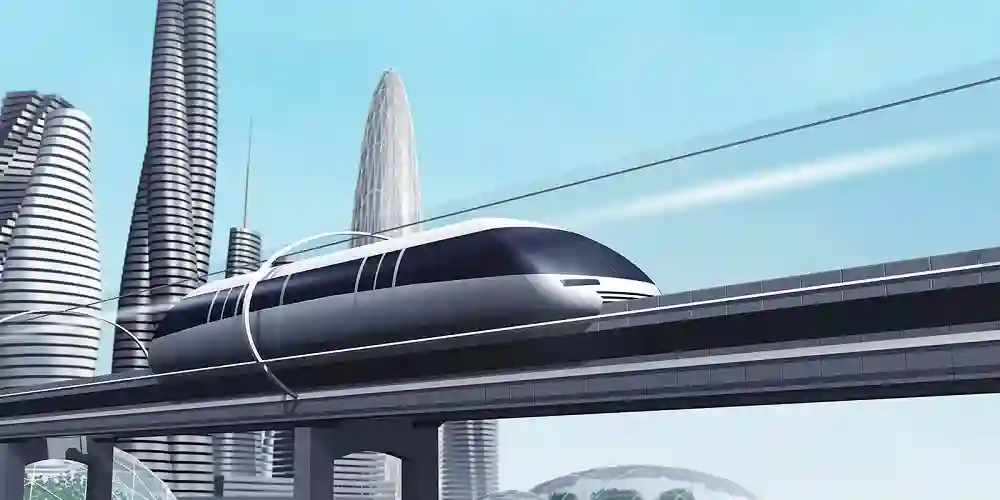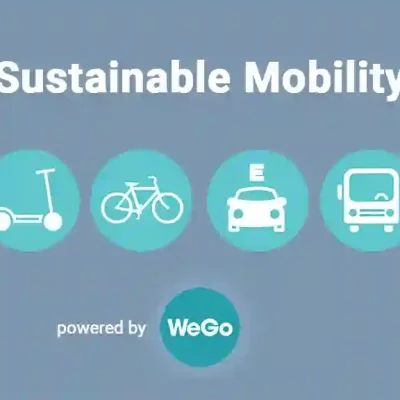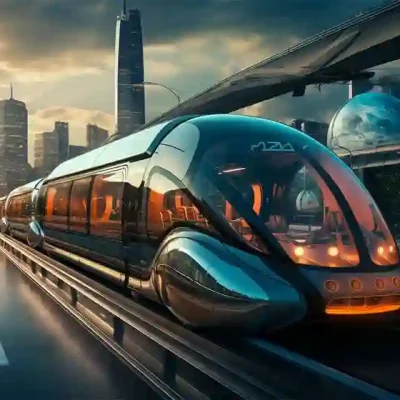In the realm of transportation, a futuristic vision is gradually becoming a reality – flying cars. Long confined to the realms of science fiction, these aerial vehicles are now at the forefront of technological innovation, promising to redefine urban mobility in ways previously unimaginable. As we stand on the cusp of a transportation revolution, exploring the potential of flying cars offers a glimpse into a future where the skies become as integral a part of our daily commutes as the roads.
1. The Evolution of Urban Mobility
As urbanization continues to rise, the challenges of traffic congestion, limited space, and environmental concerns have spurred a quest for innovative transportation solutions. Flying cars, often referred to as Vertical Takeoff and Landing (VTOL) vehicles, represent a paradigm shift in the way we conceptualize and navigate urban mobility. These vehicles, equipped with vertical takeoff and landing capabilities, have the potential to soar above traditional traffic constraints, offering a new dimension to transportation.
2. Technological Advancements Driving the Revolution
Several technological advancements are propelling the development of flying cars, making them a feasible and realistic prospect for the future:
- Electric Propulsion: Many flying car prototypes utilize electric propulsion systems, offering a cleaner and more sustainable alternative to traditional combustion engines. Electric motors contribute to reduced environmental impact and increased efficiency.
- Autonomous Technology: The integration of autonomous or semi-autonomous technology is a key feature of many flying car designs. Advanced navigation systems, obstacle detection, and collision avoidance technologies are crucial for ensuring safe and reliable aerial transportation.
- Vertical Takeoff and Landing (VTOL): The ability to take off and land vertically is a defining feature of flying cars. This enables them to operate in urban environments without the need for extensive runway infrastructure, providing flexibility in terms of landing locations.
- Advanced Materials: Lightweight and durable materials, such as carbon fiber composites, contribute to the efficiency and performance of flying cars. These materials are essential for achieving the necessary balance between structural integrity and weight considerations.
3. Urban Air Mobility (UAM) Ecosystem
The advent of flying cars is not just about individual vehicles but encompasses the development of an entire Urban Air Mobility (UAM) ecosystem. This ecosystem involves the integration of various elements, including:
- Skyports: Skyports are designated areas where flying cars can take off, land, and recharge. These skyports serve as hubs within urban areas, facilitating seamless transitions between ground and air transportation.
- Air Traffic Management: Coordinating the movement of flying cars in urban airspace requires sophisticated air traffic management systems. Integrating flying cars into existing air traffic control structures is a complex but necessary step for ensuring safe and efficient operations.
- Infrastructure Integration: Designing and integrating the necessary infrastructure, including charging stations and maintenance facilities, is crucial for the widespread adoption of flying cars. This infrastructure must be seamlessly integrated into urban landscapes.
4. Advantages of Flying Cars in Urban Mobility
The introduction of flying cars into urban transportation brings forth several potential advantages:
- Reduced Traffic Congestion: By utilizing the vertical dimension, flying cars have the potential to alleviate ground-level traffic congestion. This can lead to more efficient and faster commutes within urban environments.
- Time Efficiency: Flying cars can navigate directly to their destination, bypassing the constraints of traditional road networks. This promises significant time savings for commuters, particularly in densely populated urban areas.
- Environmental Benefits: Electric propulsion systems contribute to reduced carbon emissions compared to traditional combustion engines. Additionally, the potential for shorter travel distances and more direct routes can further minimize environmental impact.
- Emergency Services and Disaster Response: Flying cars could play a crucial role in emergency services and disaster response by providing rapid and flexible transportation to affected areas. This capability can enhance the efficiency of rescue operations and humanitarian efforts.
5. Challenges and Considerations
While the vision of flying cars holds immense promise, it is not without its challenges and considerations:
- Regulatory Framework: Establishing a regulatory framework for the operation of flying cars is a complex task. Authorities need to address issues related to air traffic management, safety standards, and certification processes to ensure the responsible integration of flying cars into urban airspace.
- Infrastructure Development: The creation of a supporting infrastructure, including skyports and charging stations, requires significant investment and careful planning. Developing this infrastructure in a way that seamlessly integrates with existing urban landscapes is a considerable challenge.
- Public Acceptance: The acceptance of flying cars by the general public is a crucial factor in their successful integration into urban mobility. Addressing concerns related to safety, noise, and privacy is essential for gaining public trust and support.
- Technological Maturity: While significant progress has been made, the technological maturity of flying cars is still evolving. Ensuring the reliability, safety, and affordability of these vehicles is essential for their widespread adoption.
6. The Future Landscape of Urban Mobility
As research and development efforts in flying car technology continue to advance, the future landscape of urban mobility is poised for a transformative shift. The coexistence of traditional ground transportation with aerial alternatives represents a multidimensional approach to addressing the challenges of urbanization. A future where flying cars seamlessly integrate into daily commuting routines, offering a dynamic and efficient mode of transportation, is no longer a distant fantasy but a tangible prospect.
Conclusion:
The future of transportation is set to soar to new heights, quite literally, with the advent of flying cars and the evolution of urban air mobility. While there are challenges to overcome, the potential benefits in terms of reduced traffic congestion, time efficiency, and environmental impact are compelling. As technological innovation, regulatory frameworks, and public acceptance converge, the dream of navigating the skies for daily commutes is becoming an exciting reality. The transformation of urban mobility is not just about reaching destinations faster but represents a paradigm shift that could redefine how we experience and navigate the cities of tomorrow.




